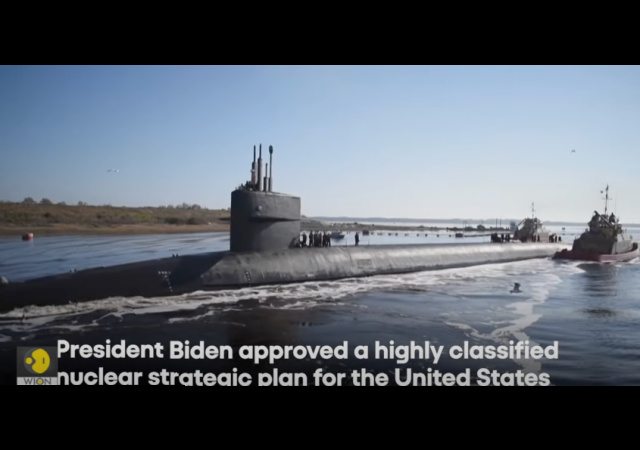Biden Approves New Strategy Related to Nuclear Confrontations with Russia, China, and North Korea

Earlier this year, before the post-primary season coup, Biden took a moment out of his nap schedule to approve a new strategy focused on nuclear confrontations with China, Russia, and North Korea.
The shift in thinking is because China’s nuclear capabilities seem to be becoming more substantial.
… Biden approved in March a highly classified nuclear strategic plan for the United States that, for the first time, reorients America’s deterrent strategy to focus on China’s rapid expansion in its nuclear arsenal.The shift comes as the Pentagon believes China’s stockpiles will rival the size and diversity of the United States’ and Russia’s over the next decade.The White House never announced that Mr. Biden had approved the revised strategy, called the “Nuclear Employment Guidance,” which also newly seeks to prepare the United States for possible coordinated nuclear challenges from China, Russia and North Korea. The document, updated every four years or so, is so highly classified that there are no electronic copies, only a small number of hard copies distributed to a few national security officials and Pentagon commanders.But in recent speeches, two senior administration officials were allowed to allude to the change — in carefully constrained, single sentences — ahead of a more detailed, unclassified notification to Congress expected before Mr. Biden leaves office.
It appears that adjustments in the size and makeup of the American force would be considered in about six years.
Daryl Kimball, executive director of the Arms Control Association, said that while U.S. intelligence estimates suggest China may increase the size its nuclear arsenal from 500 to 1,000 warheads by 2030, Russia currently has some 4,000 nuclear warheads “and it remains the major driver behind U.S. nuclear strategy.”Kimball cited June remarks by one of the officials referred to in the Times report, White House Senior Director for Arms Control, Disarmament, and Nonproliferation Pranay Vaddi.According to those remarks, U.S. strategy was to pursue nuclear arms restraints with China and Russia, but if China continued on its current trajectory and if Russia exceeds New START limits, the U.S. at some point in the future may need to consider adjustments to the size and makeup of its nuclear force, Kimball said.”My understanding is that the point at which the current administration thinks it might want to consider such changes won’t come until 2030, or some time after,” he said.
The Chinese have responded to the news by accusing the US of creating the most significant nuclear threat in the world.
“China is seriously concerned about the relevant report,” said Mao Ning, spokesperson for the Chinese Foreign Ministry, during a regular press conference. She added that Beijing maintained its nuclear arsenal at the minimum level required for national security, which was not at the same level as Washington.China has never disclosed the size of its nuclear forces. The Stockholm International Peace Research Institute (SIPRI) says that the country’s nuclear arsenal is the world’s third largest with 500 warheads. The U.S. military estimated that China would probably have over 1,000 nukes by 2030.Mao also accused the U.S. of being the “creator of the world’s largest strategic risk of nuclear threat;” the country adhered to a deterrence policy based on the first-use of nuclear weapons while upgrading its nuclear triad and “openly” tailoring nuclear deterrence strategies for its allies.
In conclusion, the Biden legacy may just be a re-release of some classic clips.
CLICK HERE FOR FULL VERSION OF THIS STORY